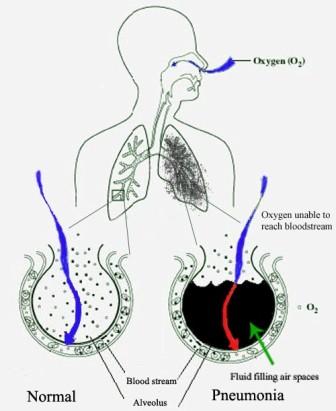Pneumonia history and symptoms

People with infectious pneumonia often have a cough producing greenish or yellow sputum and a high fever that may be accompanied by shaking chills.
Shortness of breath is also common, as is pleuritic chest pain, a sharp or stabbing pain, either felt or worse during deep breaths or coughs. People with pneumonia may cough up blood, experience headaches, or develop sweaty and clammy skin.
Other possible symptoms are loss of appetite, fatigue, blueness of the skin, nausea, vomiting, mood swings, andjoint pains or muscle aches.
Less common forms of pneumonia can cause other symptoms; for instance, pneumonia caused by Legionella may cause abdominal pain and diarrhea, while pneumonia caused by tuberculosis or Pneumocystis may cause only weight loss and night sweats.
In elderly people manifestations of pneumonia may not be typical. They may develop a new or worsening confusion or may experience unsteadiness, leading to falls. Infants with pneumonia may have many of the symptoms above, but in many cases they are simply sleepy or have a decreased appetite.